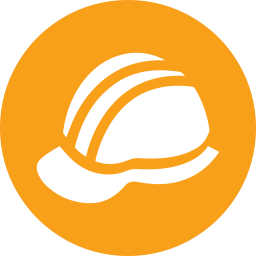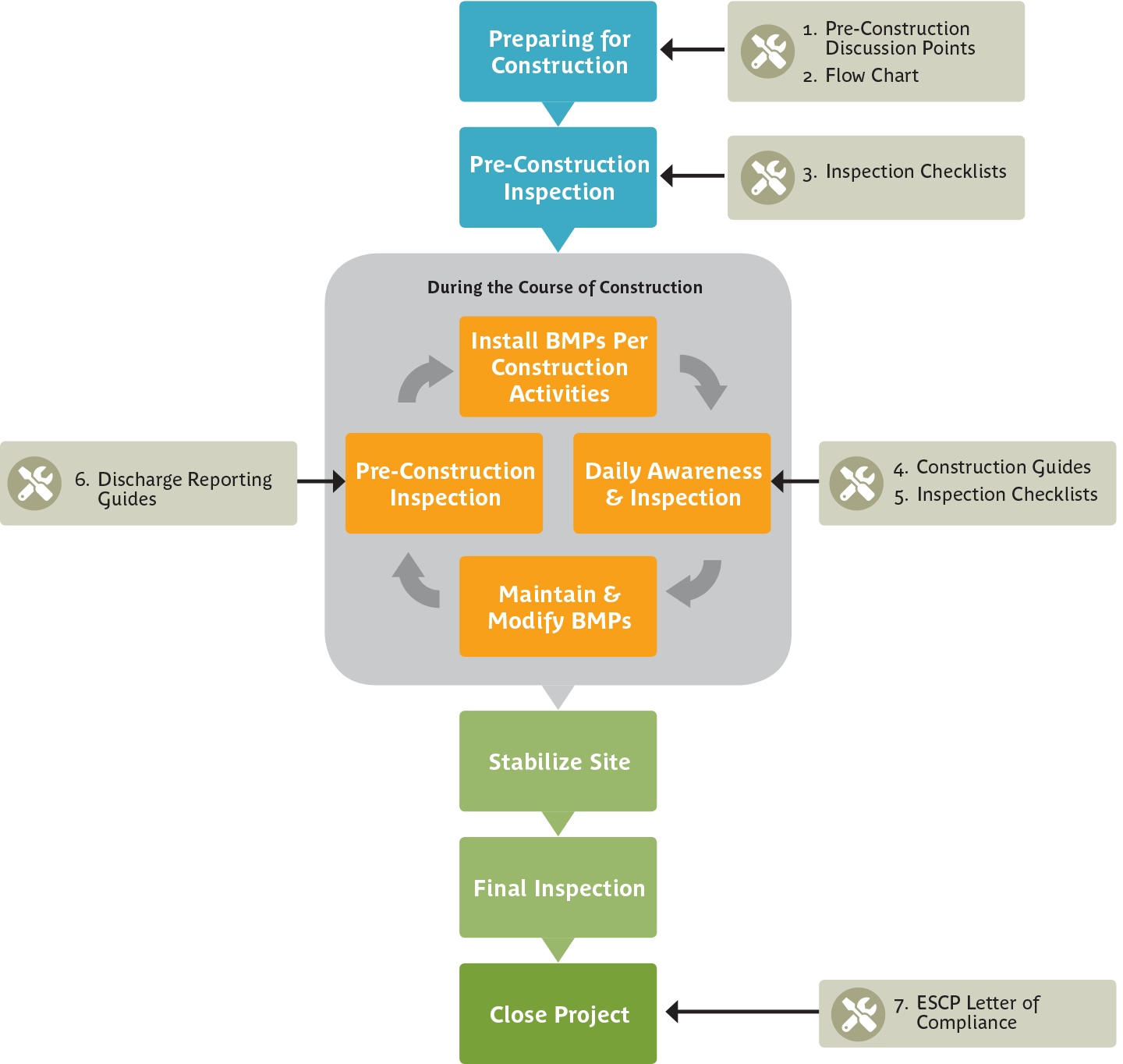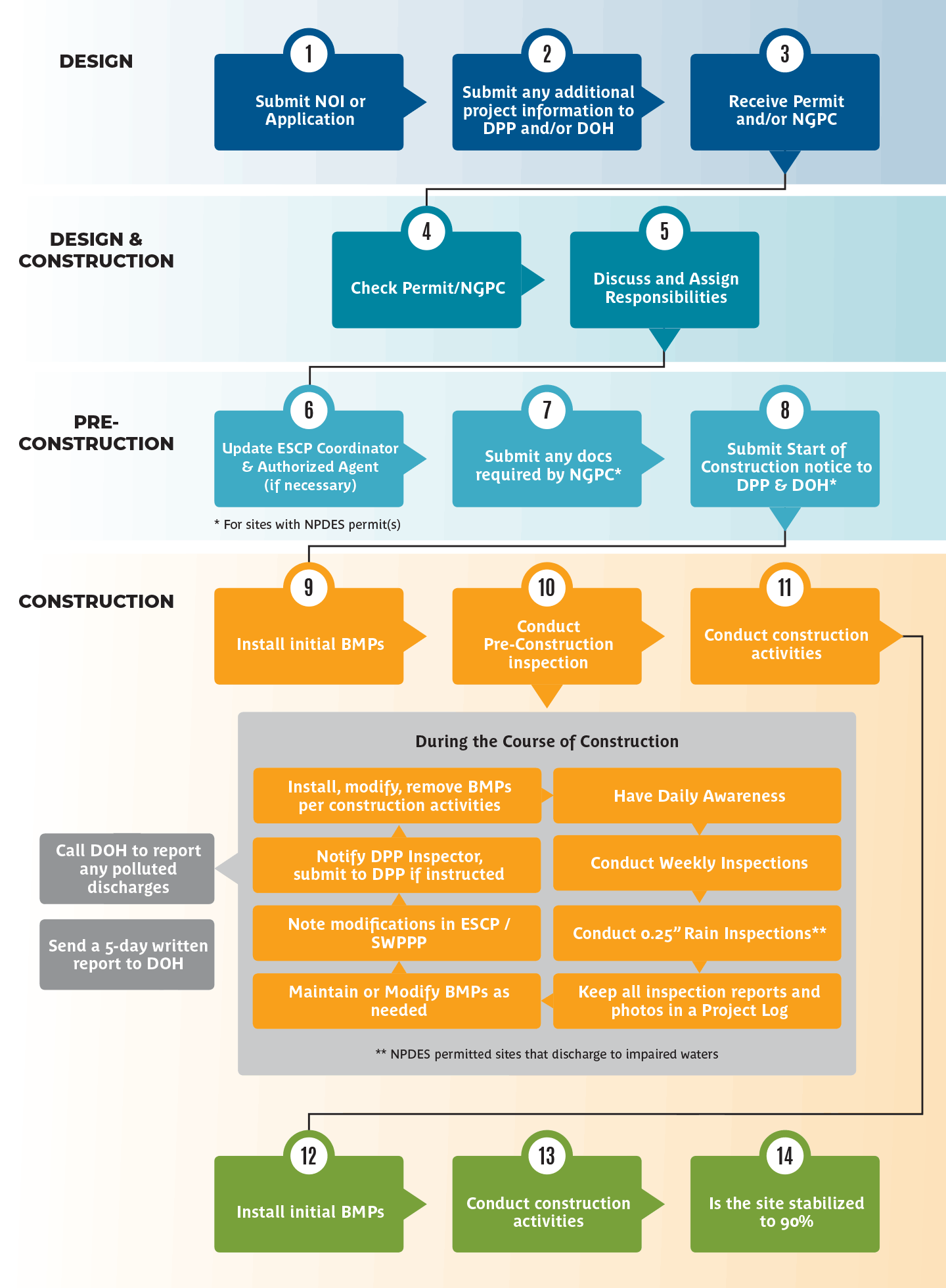
This page contains storm water related resources which will be utilized in the construction phase for small projects with a disturbed area less than 1 acre. This applies to Rules Relating to Water Quality, Effective Dec. 2018 (RRTWQ) Categories:
1A
1B
2
3
4
Trenching (< 1 acre); and
Minor Development
Note: For projects that disturb 1 acre or more of land (Categories 1C, 5 and Trenching (> 1 acre)), see the Construction Storm Water Tools (≥ 1 Acre) page instead for applicable design resources.
See below for tools developed to assist in compliance with the City’s RRTWQ and the City Municipal Separate Storm Sewer System (MS4) permit, whose main goal is to prevent storm water pollution from construction sites to Hawaii waters.
Designating an ESCP Coordinator
An Erosion and Sediment Control Plan (ESCP) Coordinator is the designee who will be responsible for the implementation, inspection and oversight of an approved ESCP during construction.
The ESCP Coordinator:
Must have a current ESCP Coordinator Certificate from the City’s Department of Planning and Permitting (DPP)
Can be a homeowner, contractor or authorized representative approved by the property owner
Must be designated prior to permit pick-up
May be changed at any time
Click on the links to the right for more information.
Pre-Construction Discussion Points
Before construction begins, it’s important to discuss compliance requirements and determine who is responsible for what. Design and construction personnel, the contractor, and contracted construction managers (if applicable), will all have useful input in this discussion, and coordination is particularly important when more than one party is involved in the completion of a task. These pre-construction discussion points are intended to help usher this conversation and ensure common requirements are covered.
General Overview of Storm Water Compliance-Related Tasks in the Construction Phase
The first tool is a construction process flowchart, which illustrates certain noteworthy storm water compliance-related tasks in the construction process. It is not meant to show all steps of the design and construction process, but is intended to present a general timeline of when compliance tasks can be expected and who will be responsible for them.
Inspection Forms for Small CCH Construction Projects
The RRTWQ require three inspections for all projects throughout the construction process:
- A pre-construction inspection
- Performed by the ESCP Coordinator prior to commencing ground-disturbing activities
- Confirm that Best Management Practices (BMPs) are installed correctly and according to the ESCP
- Required to use Appendix C – Category 1A, 1B, 2, 3, 4 and Trenching Projects
- Regular inspections of storm water BMPs
- Performed by the ESCP Coordinator
- Ensure pollution risk is being mitigated at all construction sites
- Required to use Appendix C – Category 1A, 1B, 2, 3, 4 and Trenching Projects
- A concluding inspection
- Performed by either the property owner, authorized agent, or ESCP Coordinator
- Confirm that all disturbed areas have been stabilized and all temporary BMPs have been removed
- Use ESCP Letter of Compliance
Regular Inspection Frequencies for Small CCH Construction Projects
The site shall be inspected:
- Once every 30 calendar days for Categories 1A, 1B and 2 projects
- If the project will be completed in less than 30 days, the inspection shall occur midway through the project
- Once every 7 calendar days for Categories 3 and 4 projects
Construction Guides for RRTWQ Compliance
The links below (COMING SOON!) offer construction checklists that provide guidance on pertinent RRTWQ requirements specific to each category.
Trenching Project (<1 Acre) Construction Checklist (PDF)
Minor Development Construction Checklist (PDF)
Category 1A Construction Checklist (PDF)
Category 3 Construction Checklist (PDF)
Category 4 Construction Checklist (PDF)
Guide to Reporting Polluted Discharge(s) to State Waters
Polluted discharge(s) to State Waters must be addressed immediately. In this section, we have provided you with guides on how to produce oral and written reports on discharges that may occur at your project site.
Note: Within 24 hours of becoming aware of a discharge, immediately:
- Stop the discharge, and
- Notify the DOH-CWB Enforcement Section at 808-586-4309, or if outside of office hours, call the Hawaii State Hospital Operator at 808-247-2191.

FEEDBACK?
Please contact The Limtiaco Consulting Group should you have any questions or require any assistance. Your feedback regarding any of the tools and information featured here is gladly appreciated.
The Limtiaco Consulting Group
npdes@tlcghawaii.com
(808) 596-7790


